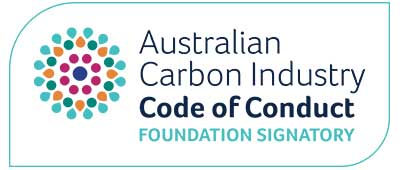Is savanna under threat?
Savanna fires in the north of Australia contribute about 2-3 per cent of Australia’s national emissions. There are currently 12 approved savanna burning projects under the national offsets scheme, the Carbon Farming Initiative. The projects create fire breaks in the early dry season to stop wildfires taking hold in the late dry season – this reduces emissions of methane and nitrous oxide from the fires. But with the carbon price gone and a range of CFI changes proposed by the Government, will you join the cool fire movement?
You are burning on country. You have a ranger group and a bit of money from Working on Country and an Indigenous Protected Area agreement (both Government programs). You are thinking about stepping up your work into an CFI project. Lucky for you there’s a great savanna burning method you can use. It didn’t happen by chance but came on the back of a decade of hard work by traditional owners and Government together. Let’s hope that continues with new savanna methods in the pipeline.

Figure showing how savanna carbon credits are generated
You apply for a project but you may not be eligible. Whereas the CFI made classes of projects that were okay – like savanna burning – the ERF introduces new project tests: the project must not have started and be unlikely to be carried out under another government program. If the rangers are carrying out some burning has the project started? Maybe not but a project is defined as a ‘set of activities’ and burning is an activity? The Government has reassured that it’s not their intention to prevent projects obtaining funding from multiple sources, but the legislation does not offer this reassurance. We’ll see.
So you are approved and now it’s time to prepare a bid to compete in the Emissions Reduction Fund auction. You have to work out how much this is going to cost up front for 5 years with a feast of moving parts and different funding contributions. And you also have to convince the Clean Energy Regulator that you are up for this – that’s right, it’s not up to you, the Regulator can exclude your bid if they do not consider you have the capacity to carry out the project. So you have to show them you are ready, even if you haven’t done this before.
You’ve got your bid together, but it’s competitive out there. All these other industry methods are coming on stream and some really big projects are being proposed. The Regulator can also do special deals directly if it wants. The problem is there’s not too much money to go around. ERF funding of $2.5 billion has been spread out over 10 years. For example, there’s only $76m allocated for the first year. This smaller pool means that if some mega projects scoop the pool, there might not be much left for your little savanna project and its extra benefits looking after land and people.
But you win a 5 year contract. Everything is going well. The rangers are loving it and the country looks great. But suddenly in years 4 and 5 the fires get really bad: you can’t deliver the abatement you promised. Unlucky for you, the contract says you still have to cough up. So you will have to dip into your own pocket to buy credits from other projects. This is not what you had in mind! Maybe you should have bid less? But you are not allowed – only whole projects are accepted as bids.
You find the money and cover the contract. Alas, you can’t get back in the black because it’s the only contract you can get. You only get one for 5 years. So from now on, you’re on your own. That’s okay, you can go on the voluntary market and sell your credits to anyone. Anyone! It’s harder to find buyers when companies don’t have to pay but you manage it. You’ve got a contract with a buyer you really like. But wait, after 2 years the credits run out! Because you can only get one crediting period, you can’t any more credits under the ERF after 7 years. Without credits you have nothing to sell.
The buyer suggests using an international voluntary standard instead of the ERF. But there isn’t one at the moment – work is continuing through a Government funded project to internationalise savanna, but it’s not there yet. And even if it was, international standards won’t certify projects in Australia unless the government will cancel some of its Kyoto credits for the project – if not, the project could get counted by Australia in its Kyoto account and by another country as well. The Government doesn’t want to play that game but maybe something will come up.
Who’s up?























